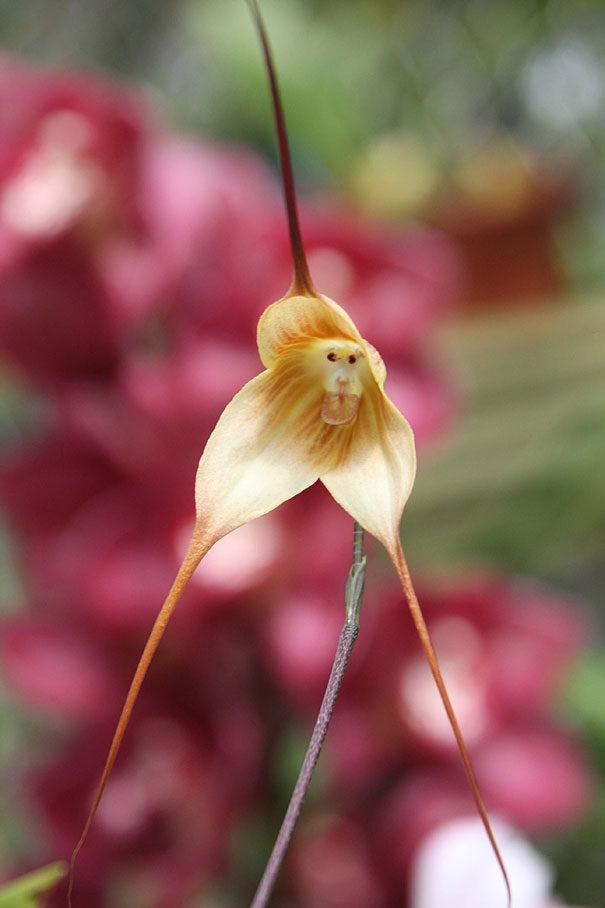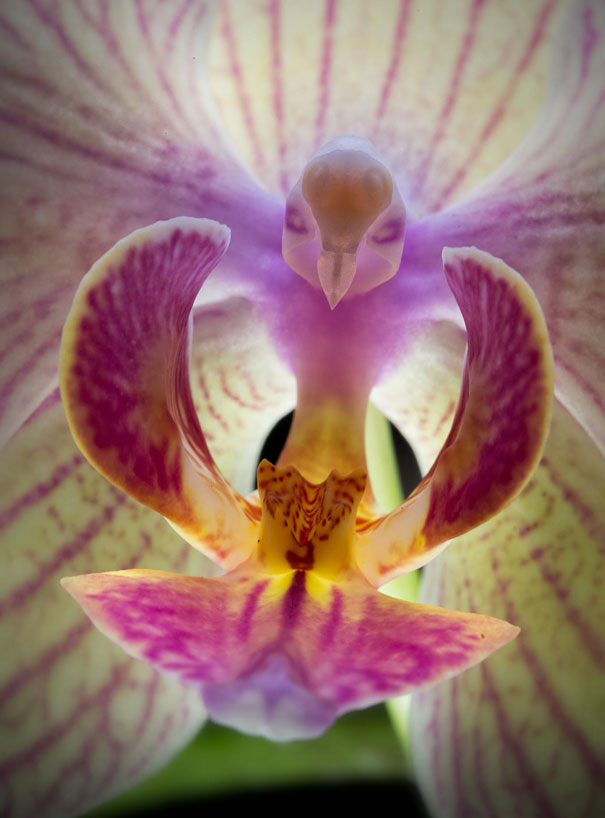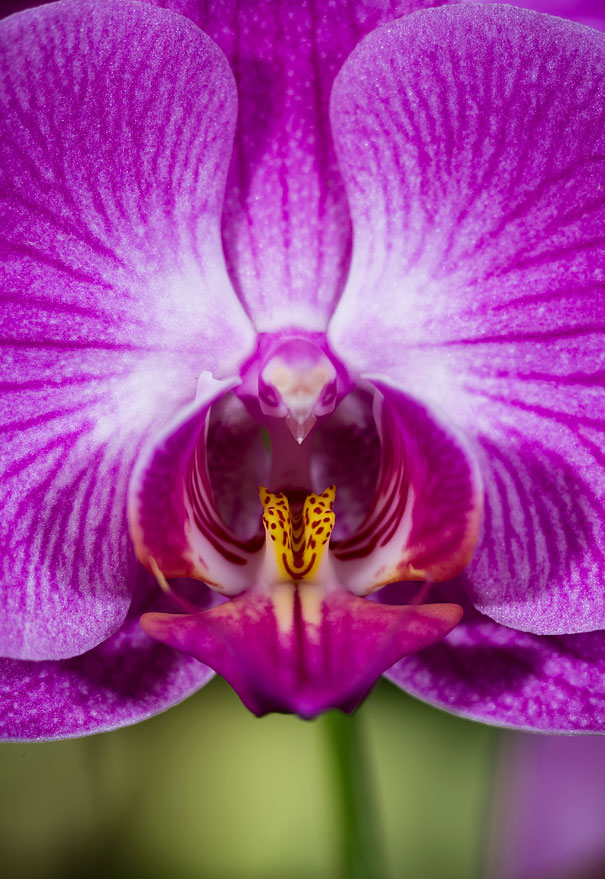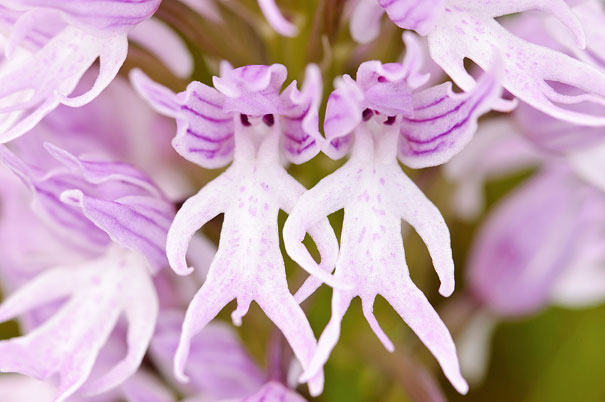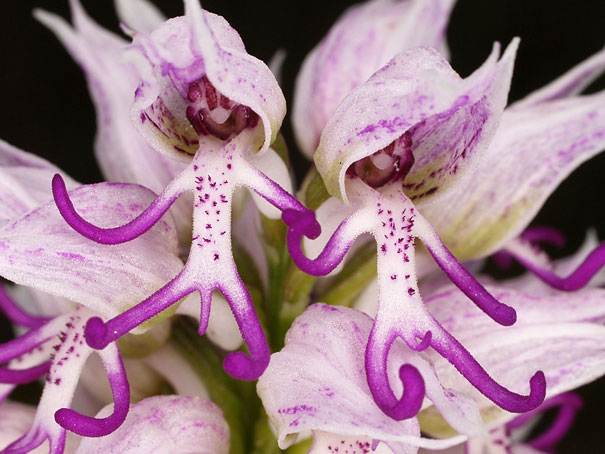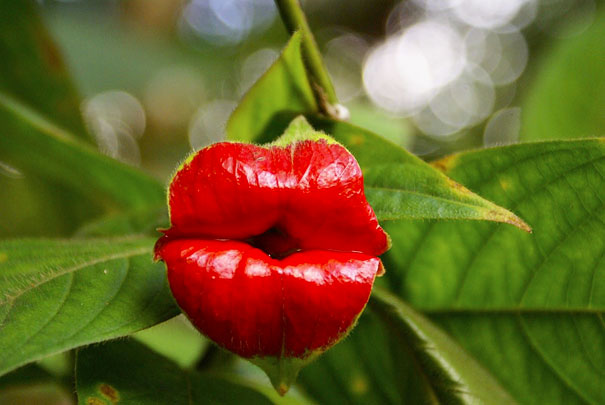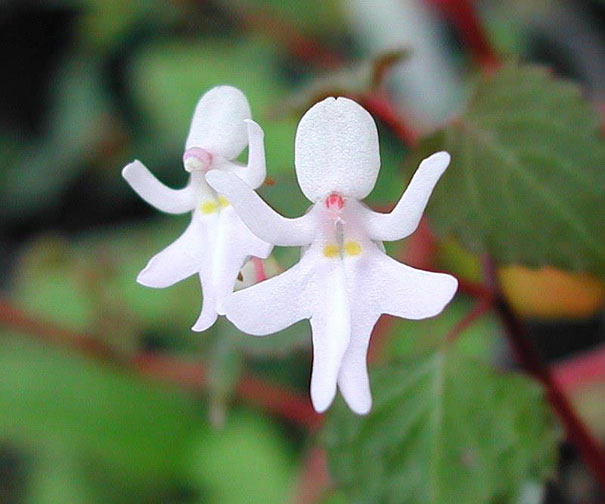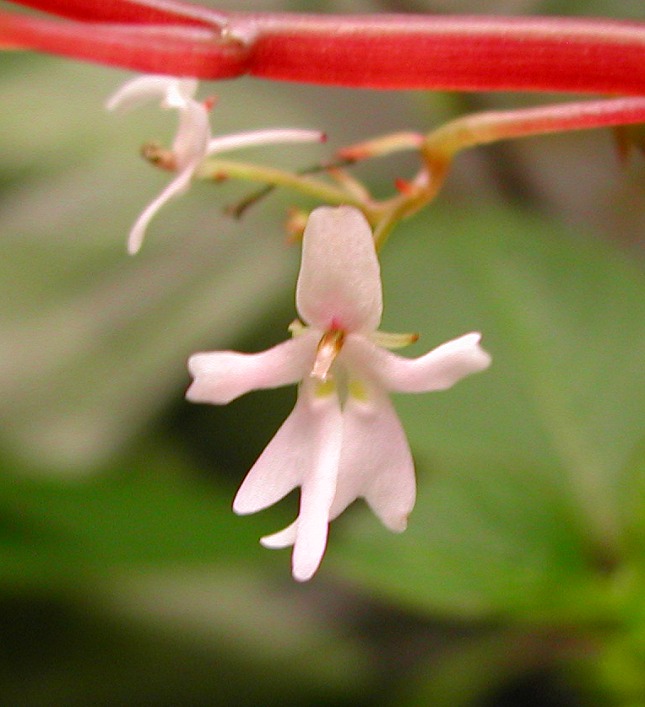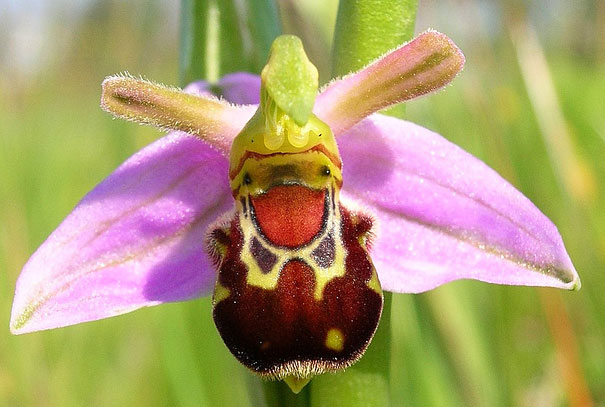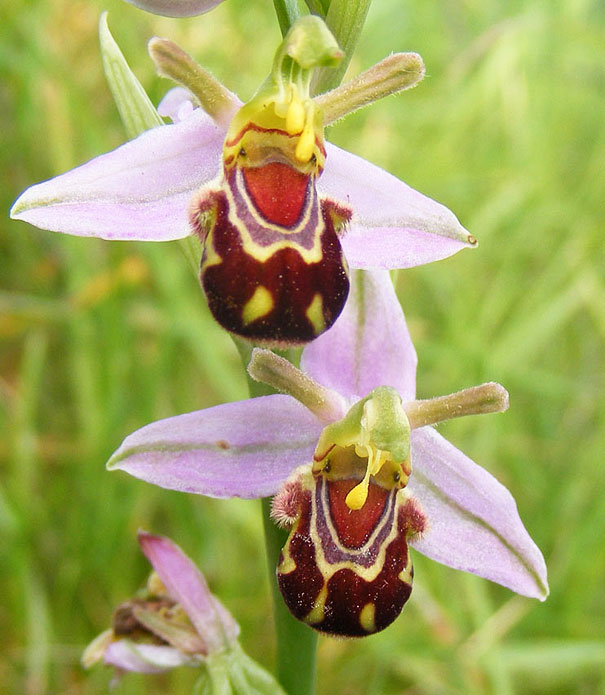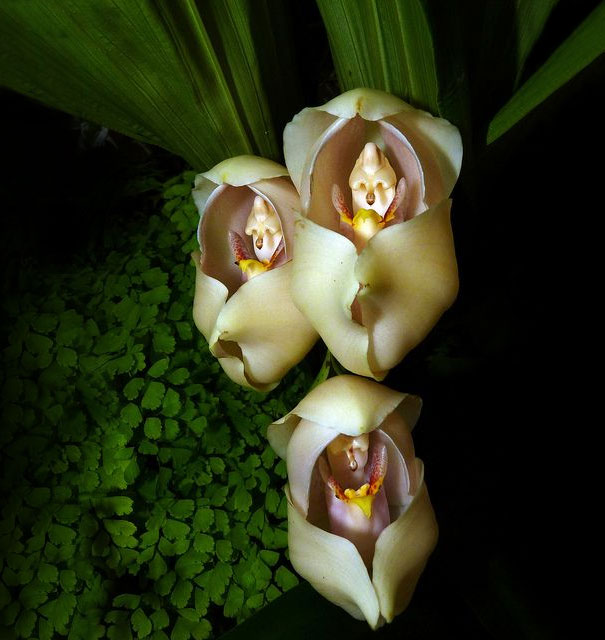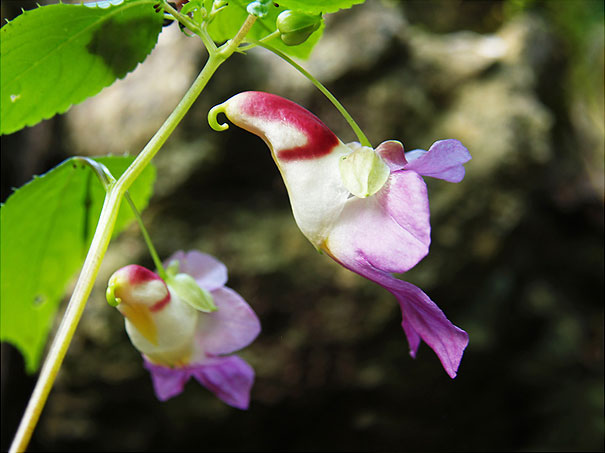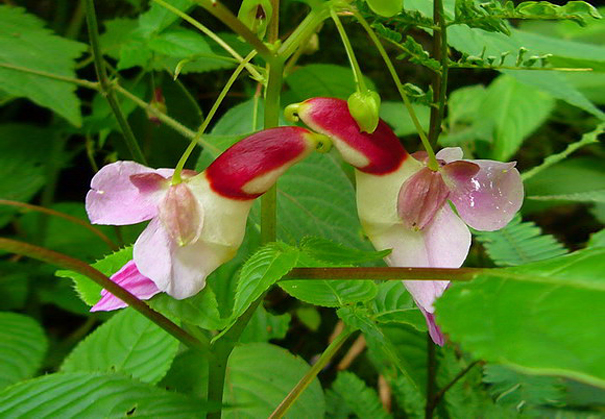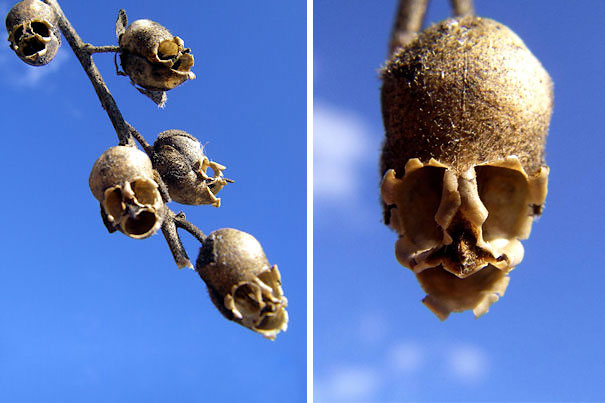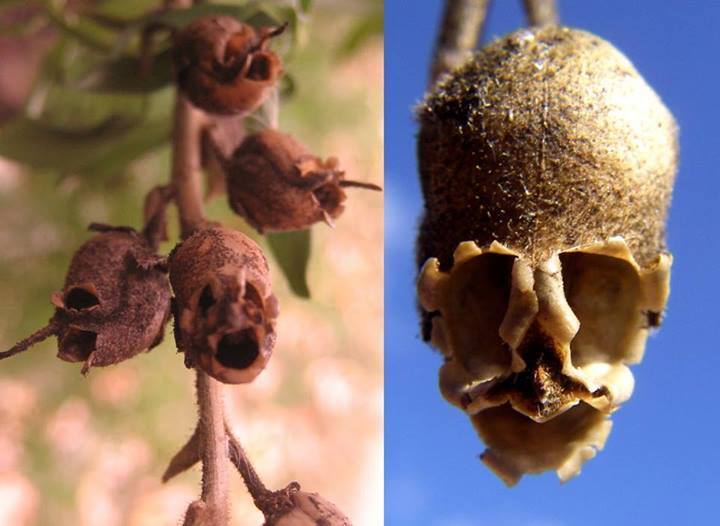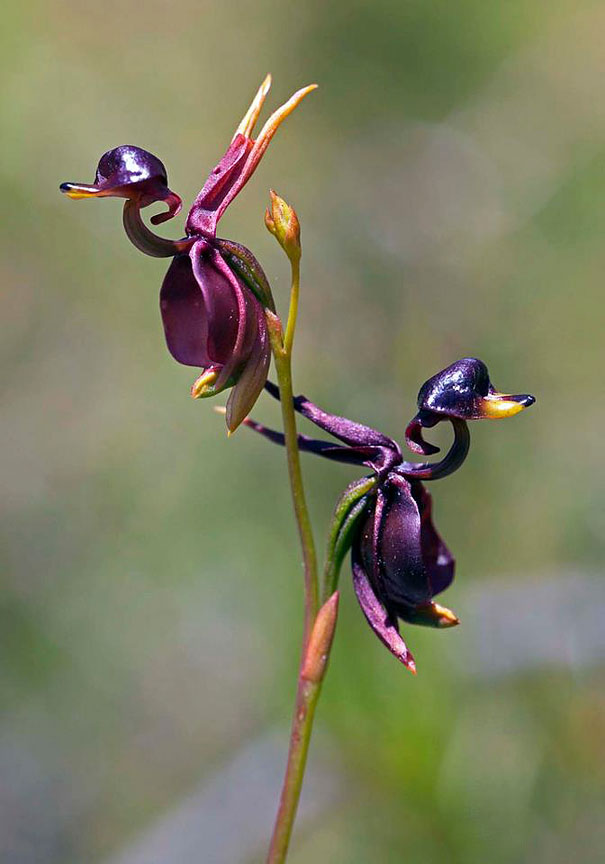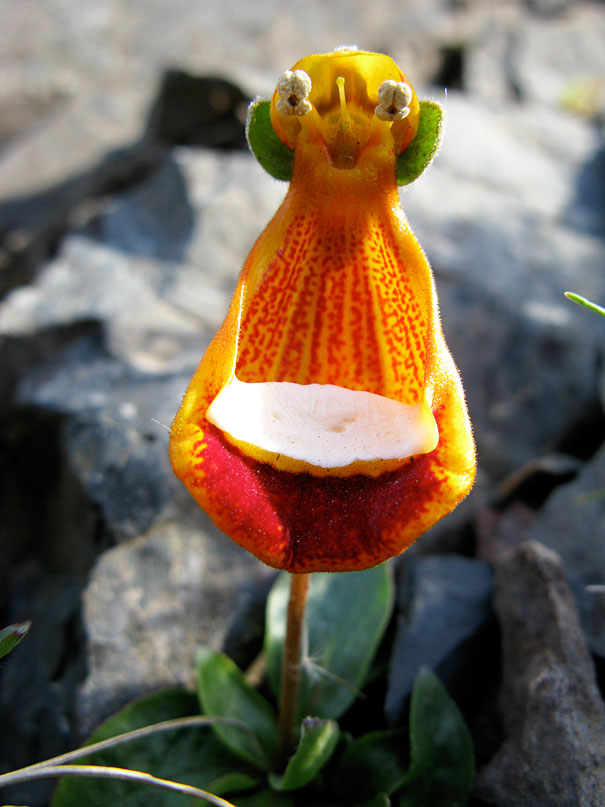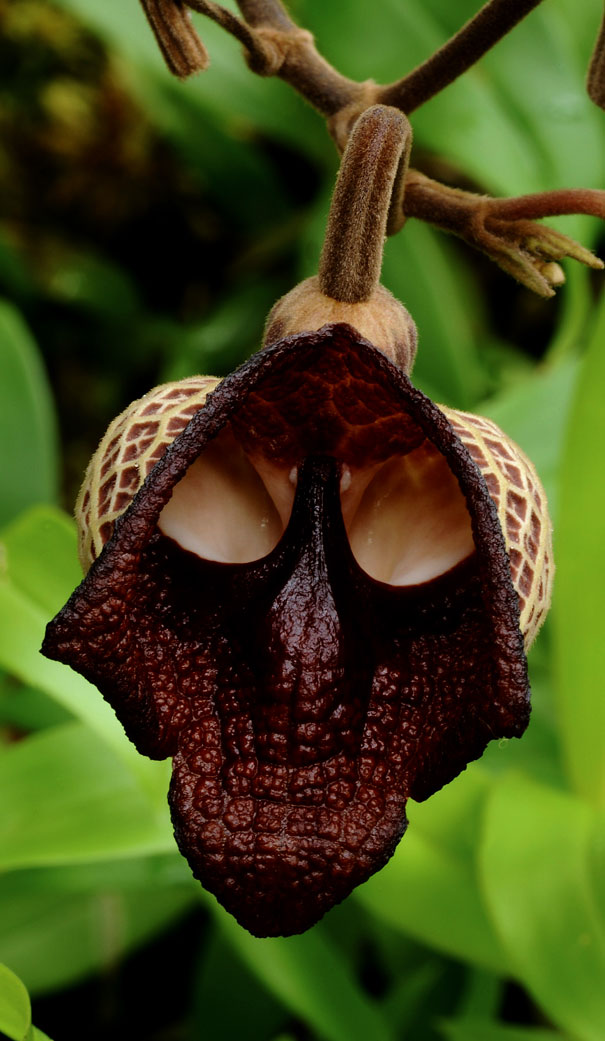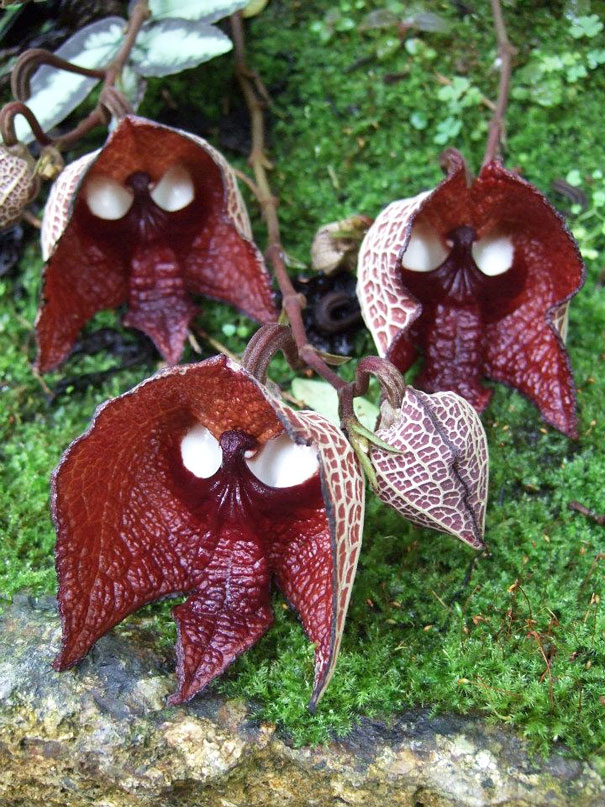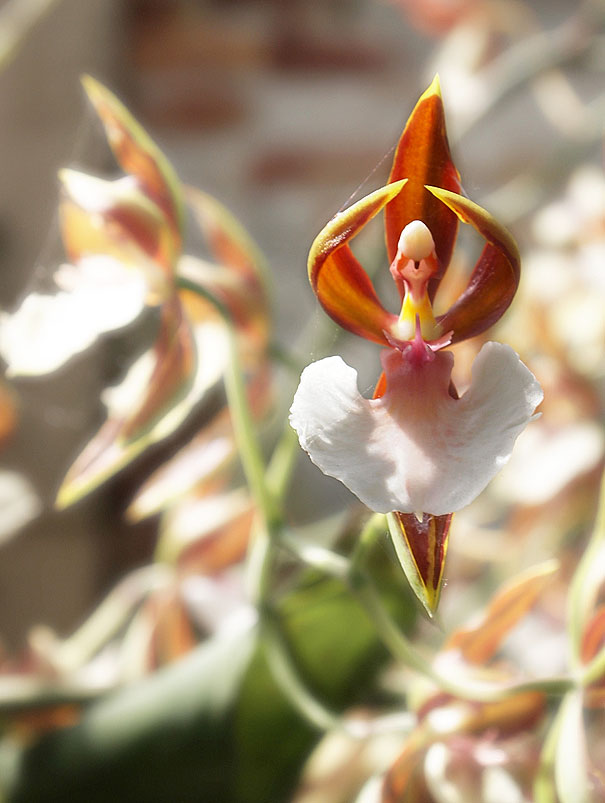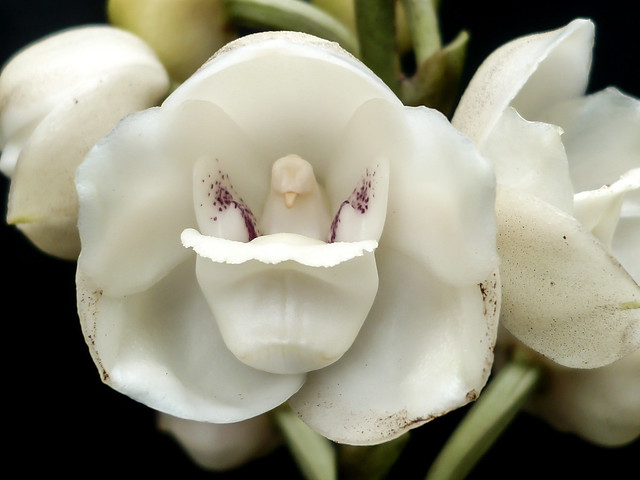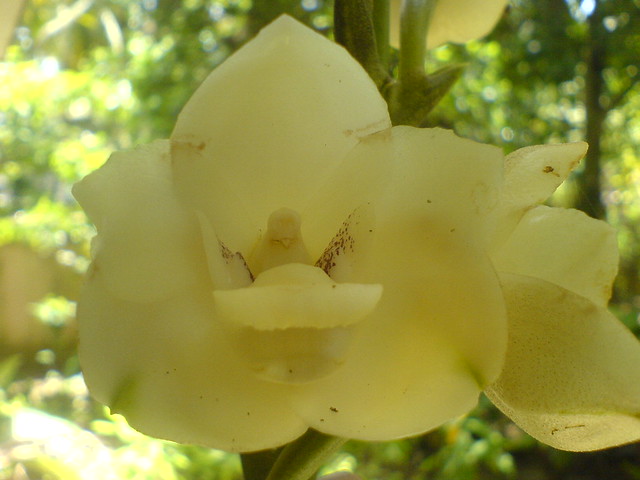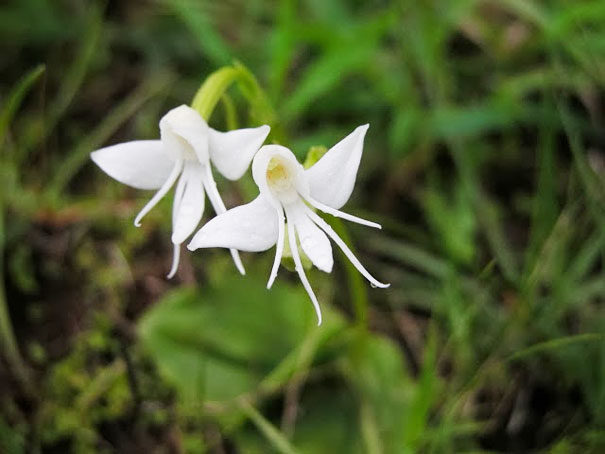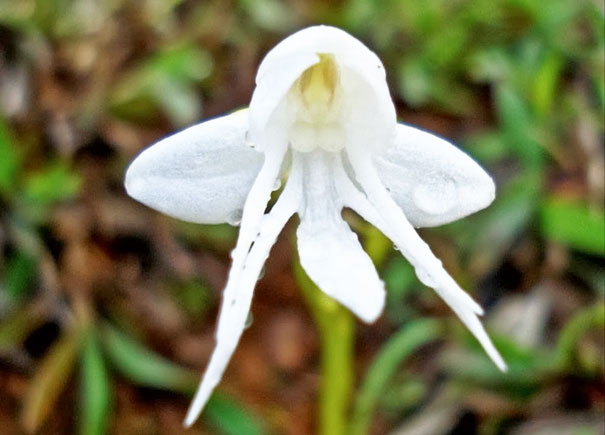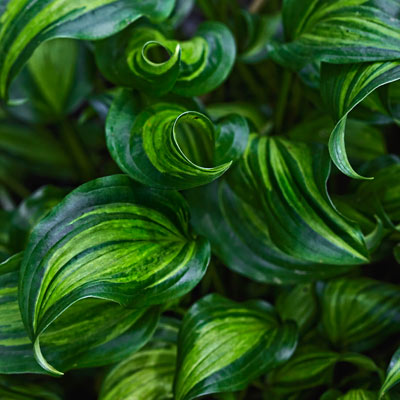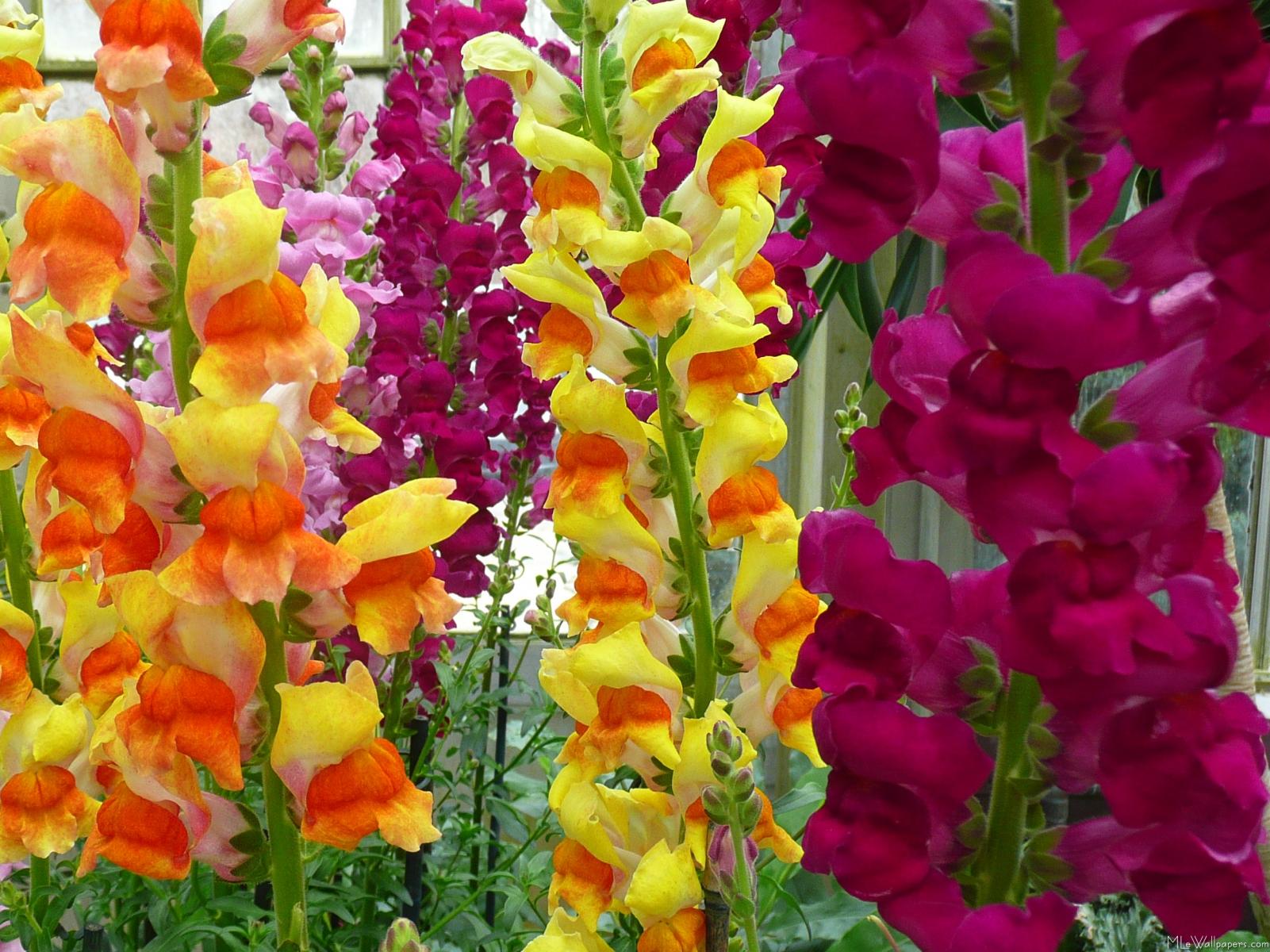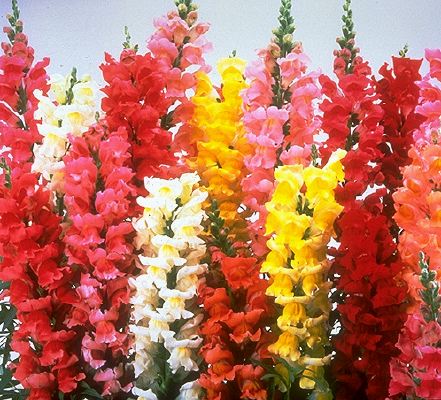The flower, as a reproductive organ, evolved with one primary purpose in mind – to attract pollinators like insects or birds. This function has driven their astounding evolutionary explosion of distinct colors and shapes, some of which have even come to resemble various recognizable figures, plants or animals.
The colors of these flamboyant orchids attract insects and birds, signaling that these flowers are full of tasty nectar. Their shapes, on the other hand, often evolve to attract or accommodate specific pollinators while dissuading parasites or other, less desirable pollinators. Some flowers are more welcoming to bees, while others are perfect for hummingbirds or different insects.
Their stunning colors and biodiversity have attracted another type of creature as well – us. Orchid lovers value flowers like these for their resemblance to other recognizable objects which, while coincidental, is still definitely entertaining!
Monkey Face Orchid (Dracula Simia)
|
|
Monkey Face Orchid (Dracula Simia)
|
Moth Orchid (Phalaenopsis)
Moth Orchid (Phalaenopsis)
Moth Orchid (Phalaenopsis)
Naked Man Orchid (Orchis Italica)
Naked Man Orchid (Orchis Italica)
Hooker’s Lips (Psychotria Elata)
Hooker’s Lips (Psychotria Elata)
Dancing Girls (Impatiens Bequaertii)
Laughing Bumble Bee Orchid (Ophrys bomybliflora)
Laughing Bumble Bee Orchid (Ophrys bomybliflora)
Swaddled Babies (Anguloa Uniflora)
Parrot Flower (Impatiens Psittacina)
Parrot Flower (Impatiens Psittacina)
White Egret Orchid (Habenaria Radiata)
White Egret Orchid (Habenaria Radiata)
Snap Dragon Seed Pod (Antirrhinum)
Flying Duck Orchid (Caleana Major)
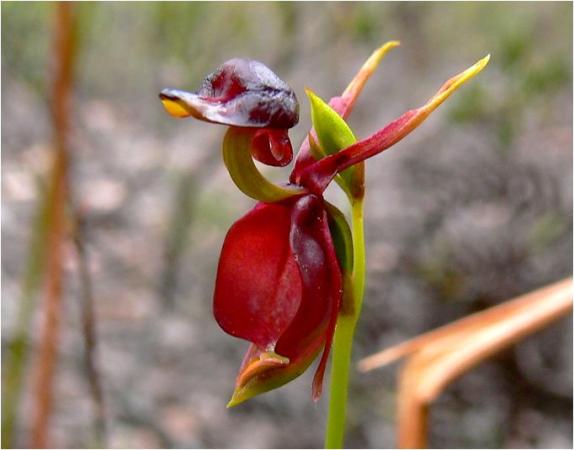 Flying Duck Orchid (Caleana Major)
Flying Duck Orchid (Caleana Major)
Happy Alien (Calceolaria Uniflora)
Happy Alien (Calceolaria Uniflora)
Darth Vader (Aristolochia Salvadorensis)
Darth Vader (Aristolochia Salvadorensis)
Orchid That Looks Like A Ballerina
Dove Orchid Or Holy Ghost Orchid (Peristeria Elata)
Dove Orchid Or Holy Ghost Orchid (Peristeria Elata)
Angel Orchid (Habenaria Grandifloriformis)





